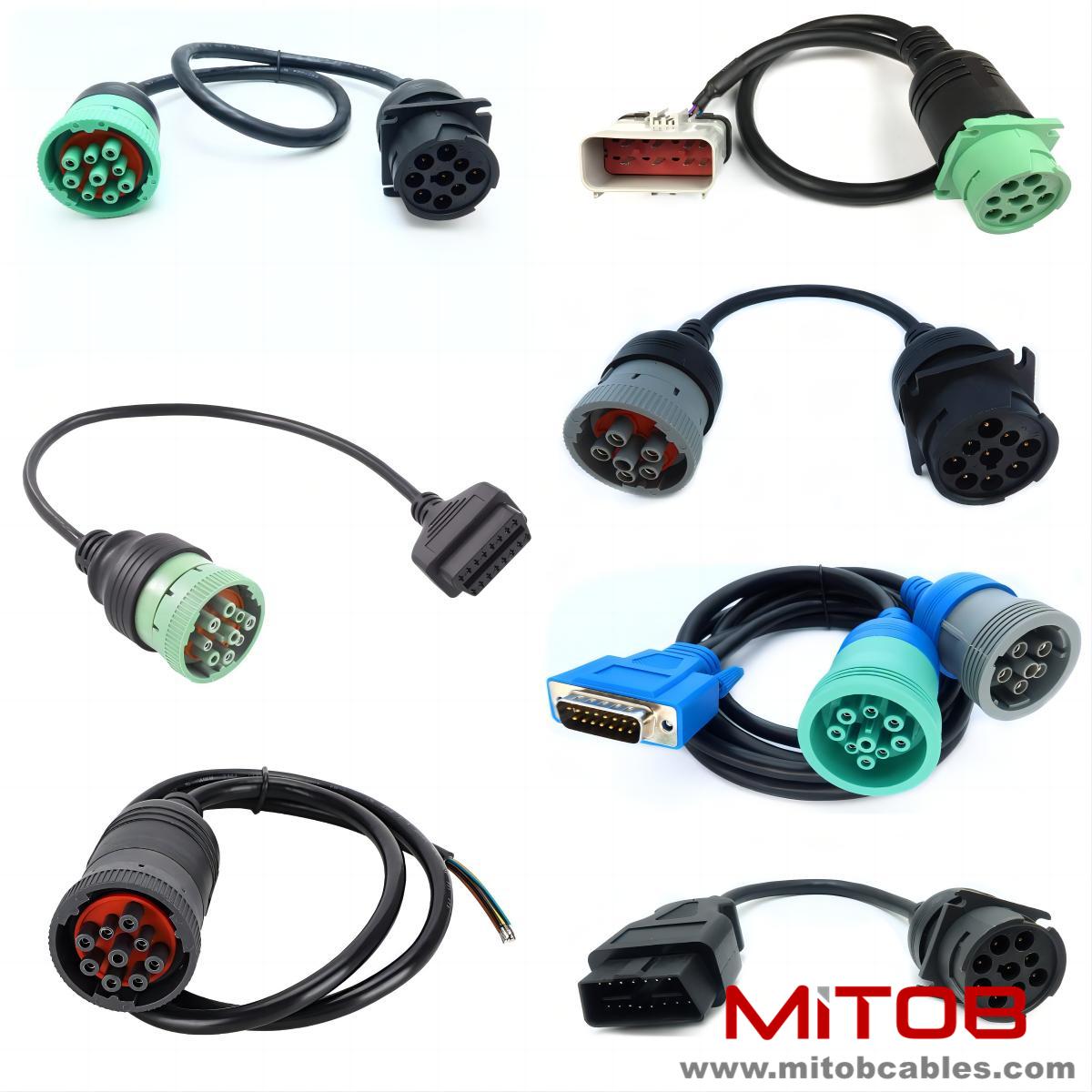To determine whether the shielding layer of J1939 cable is damaged, the following aspects can be taken into account:

VISUAL INSPECTION
Integrity of shielding layer: Carefully inspect the surface of the cable and check for obvious physical damage such as damage, breakage, holes, or gaps in the shielding layer. Special attention should be paid to the bending parts, joints, and areas that are prone to friction or external compression of the cable, as the shielding layer in these areas is more likely to be damaged.
Shielding layer connection: Check whether the shielding layer at both ends of the cable is well connected to the connector. The shielding layer should be tightly connected to the joint without any looseness, detachment, or disconnection. If gaps or incomplete coverage are found in the shielding layer at the connection head, it may affect the shielding effect.
Material condition of shielding layer: For the metal braided mesh shielding layer, observe whether the metal wires of the braided mesh are rusted, corroded, or discolored. Rust or corrosion may weaken the conductivity and shielding performance of the shielding layer. For the aluminum foil shielding layer, check whether the aluminum foil has wrinkles, damage, or delamination. If these conditions occur in the aluminum foil, it may cause the shielding layer to lose its integrity and be unable to effectively shield electromagnetic interference.
Electrical performance testing
Resistance test: Use a multimeter or a professional resistance tester to measure the resistance of the shielding layer. Under normal circumstances, the resistance of the shielding layer should be within a relatively stable range. If a significant increase in resistance is observed, it may be due to issues such as breakage, poor contact, or corrosion in the shielding layer, leading to a decrease in conductivity.
Shielding effectiveness test: As mentioned earlier, use an electromagnetic shielding effectiveness tester to test the cable. If the test results show that the shielding effectiveness of the cable is significantly lower than the normal level, it indicates that the shielding layer may be damaged and unable to effectively block electromagnetic interference. However, this testing method requires professional equipment and environment.
Signal transmission testing
Data integrity testing: Connect the J1939 cable to the corresponding device for data transmission testing. For example, in vehicle electronic systems, diagnostic data or control signals are transmitted through cables. Observe whether the data transmission is accurate and complete, and whether there are any issues such as error codes, data loss, or signal interruption. If abnormalities occur during transmission and the possibility of other equipment failures is ruled out, it may be due to damage to the shielding layer of the cable, causing external electromagnetic interference to affect signal transmission.
Signal quality testing: Use equipment such as oscilloscopes to monitor the waveform of cable transmitted signals. If distortion, jitter, or increased noise is found in the waveform, it indicates that the signal quality has been affected. After excluding other factors, damage to the shielding layer may be one of the reasons for the decrease in signal quality, as the shielding layer cannot effectively suppress electromagnetic interference, causing interference signals to be superimposed on the transmitted signal.
Contact: Kevin
Phone: 0086-18823374992
E-mail: kevin@mitobcable.com
Whatsapp:
Add: Bld B2, Floor7 , Xinghe Zhongkai AI Industrial Park, Zhongkai High-tech Zone, Huizhou,China